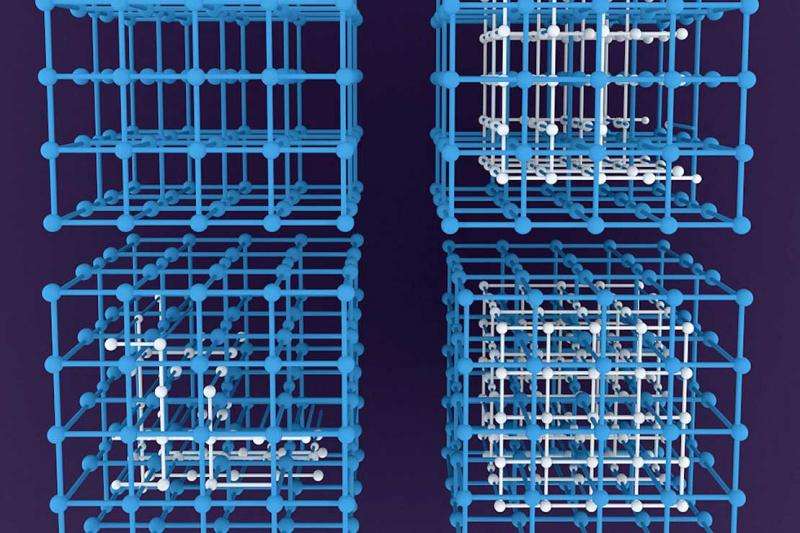Crystal frameworks hold potential to deter pollution

Chemists at Massey University have created a hybrid crystal framework, which has the potential for applications in vehicle fuel storage, carbon dioxide removal from smokestacks and drug delivery.
The material, known as a metal-organic framework, was made by combining a metal salt with an organic molecule (in this case a specially-designed organic acid) to create a framework called MUF-9, or Massey University Framework. The reaction creates a particular type of sponge-like crystal with microscopic holes that grab gas molecules just as regular sponges grab water.
The structure was made by connecting organic struts, and using metal ions as rivets. The scientists have also shown how to control the growth of a second lattice within the first.
The degree to which the crystal can store and separate gases depends on how much of the crystal is interpenetrated, or has a second lattice growing inside the first. Interpenetration in these frameworks is like threads of a cloth being interwoven with one another.
In a paper published today in the journal Nature Chemistry, a highly prestigious journal in the field of chemical sciences, scientists at Massey University, who led an international team involving researchers from the Institut de Recherche de Chimie, Paris, University of Leuven, Belgium and Delft University of Technology, The Netherlands, found a way to control interpenetration so that it only occurs in particular regions of the crystals.
This control over the interpenetration in MUF-9 can be exerted in several ways. The partially interpenetrated frameworks can be made directly, or by heating or grinding the original open material.
Professor Shane Telfer, from Massey's Institute of Fundamental Sciences, says by fine-tuning the crystals, the researchers have more control over their structural features, which is important for their applications.
"These new materials both have open regions that can act as a reservoir for incoming gas molecules as well as tight spaces, which can discriminate and sort the guests bases on their size and chemical characteristics," he says.
"Although applications may be some way off, there is potential for these materials to be applied to carbon dioxide capture, as storage media in the fuel tanks of vehicles using non-petroleum fuels, and for the destruction of pollutants and other harmful materials."
Shorter-term, he says the work is expected to resonate with the large international research community in this area as it gives new and valuable insight into the phenomenon of interpenetration.
More information: Alan Ferguson et al. Controlled partial interpenetration in metal–organic frameworks, Nature Chemistry (2016). DOI: 10.1038/nchem.2430
Journal information: Nature Chemistry
Provided by Massey University



















